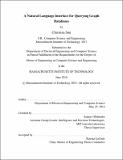| dc.contributor.advisor | Sanjeev Mohindra. | en_US |
| dc.contributor.author | Sun, Christina, M. Eng. Massachusetts Institute of Technology | en_US |
| dc.contributor.other | Massachusetts Institute of Technology. Department of Electrical Engineering and Computer Science. | en_US |
| dc.date.accessioned | 2018-12-18T19:46:41Z | |
| dc.date.available | 2018-12-18T19:46:41Z | |
| dc.date.copyright | 2018 | en_US |
| dc.date.issued | 2018 | en_US |
| dc.identifier.uri | http://hdl.handle.net/1721.1/119708 | |
| dc.description | Thesis: M. Eng., Massachusetts Institute of Technology, Department of Electrical Engineering and Computer Science, 2018. | en_US |
| dc.description | This electronic version was submitted by the student author. The certified thesis is available in the Institute Archives and Special Collections. | en_US |
| dc.description | Cataloged from student-submitted PDF version of thesis. | en_US |
| dc.description | Includes bibliographical references (pages 67-69). | en_US |
| dc.description.abstract | An increasing amount of knowledge in the world is stored in graph databases. However, most people have limited or no understanding of database schemes and query languages. Providing a tool that translates natural language queries into structured queries allows people without this technical knowledge or specific domain expertise to retrieve information that was previously inaccessible. Many existing natural language interfaces to databases (NLIDB) propose solutions that may not generalize well to multiple domains and may require excessive feature engineering, manual customization, or large amounts of annotated training data. We present a method for constructing subgraph queries which can represent a graph of activities, events, persons, behaviors, and relations, for search against a graph database containing information from a variety of data sources. Our model interprets complex natural language queries by using a pipeline of named entity recognition and binary relation extraction models to identify key entities and relations corresponding to graph components such as nodes, attributes, and edges. This information is combined in order to create structured graph queries, which may then be applied to graph databases. By breaking down the translation task into a pipeline of several submodules, our model achieves a prediction accuracy of 46.9 % with a small training set of only 218 sentences. | en_US |
| dc.description.statementofresponsibility | by Christina Sun. | en_US |
| dc.format.extent | 69 pages | en_US |
| dc.language.iso | eng | en_US |
| dc.publisher | Massachusetts Institute of Technology | en_US |
| dc.rights | MIT theses are protected by copyright. They may be viewed, downloaded, or printed from this source but further reproduction or distribution in any format is prohibited without written permission. | en_US |
| dc.rights.uri | http://dspace.mit.edu/handle/1721.1/7582 | en_US |
| dc.subject | Electrical Engineering and Computer Science. | en_US |
| dc.title | A natural language interface for querying graph databases | en_US |
| dc.type | Thesis | en_US |
| dc.description.degree | M. Eng. | en_US |
| dc.contributor.department | Massachusetts Institute of Technology. Department of Electrical Engineering and Computer Science | |
| dc.identifier.oclc | 1078222310 | en_US |
